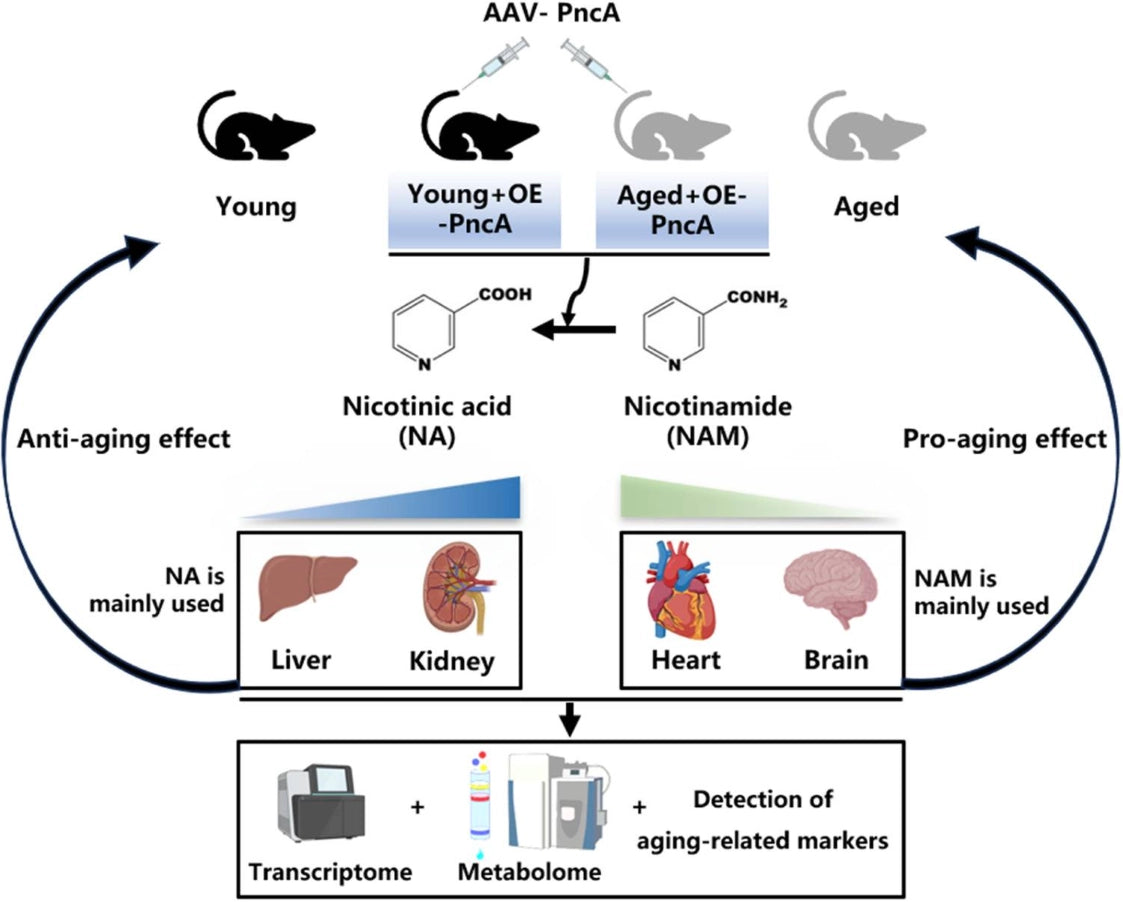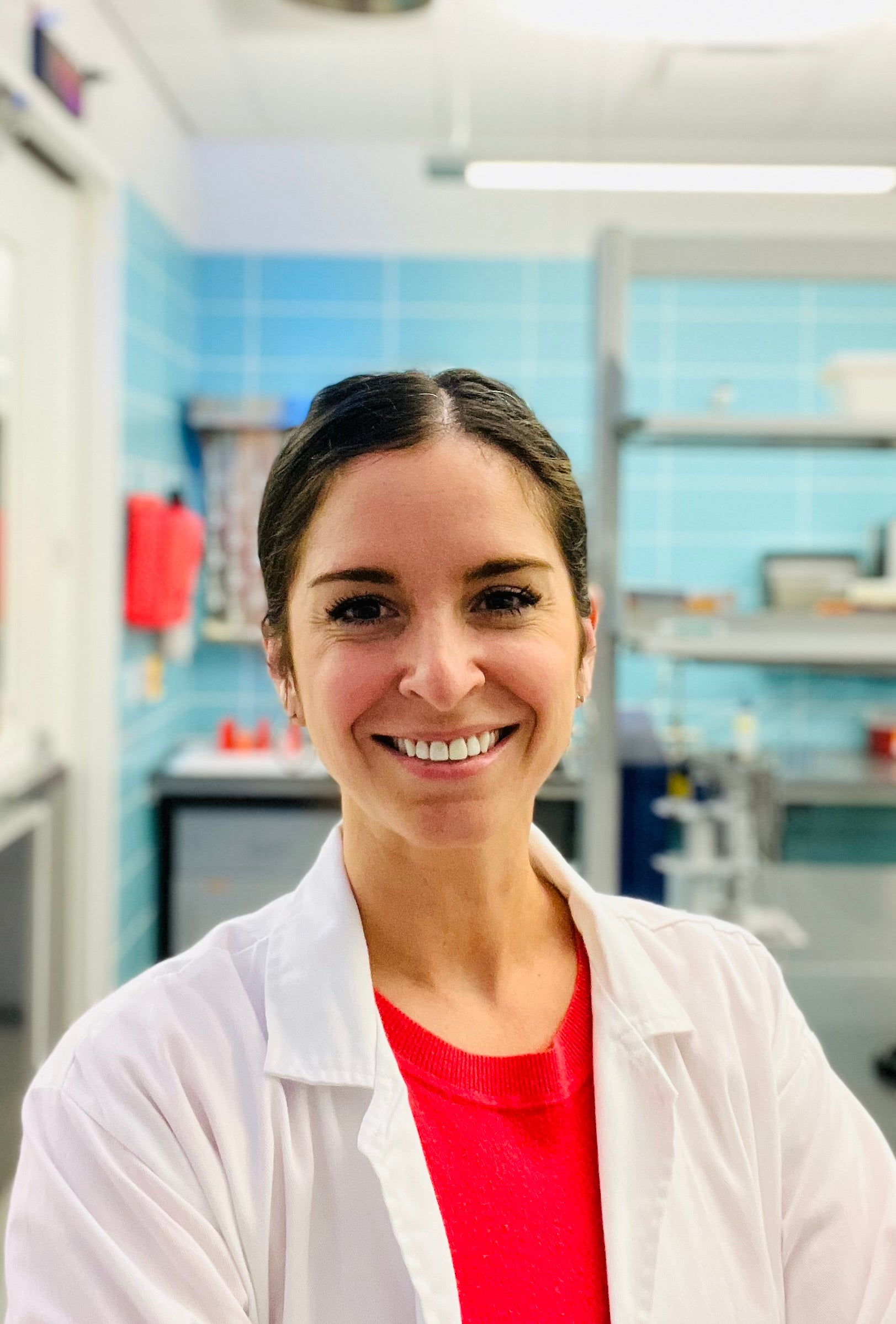Key Points:
-
Liver & Kidneys: PnCA increased NAD+ levels, improved mitochondrial function, and delayed aging markers in older mice
-
Heart & Brain: PnCA reduced NAD+ levels, worsened aging markers, and caused cognitive decline in young mice
-
Tissue-Specific Responses: Tissues like the liver prefer nicotinic acid (NA) for NAD+ synthesis, while the heart and brain rely more on nicotinamide (NAM)
Study Overview
Researchers used genetically engineered mice to overexpress PncA, a bacterial enzyme that converts NAM to NA, a precursor for NAD+.
They measured NAD+ levels, mitochondrial function, aging markers (like p16 and p53), and cognitive performance in young (4 months) and aged (25 months) mice across four tissues: liver, kidneys, heart, and hippocampus
NAD+ Boost and Delayed Aging in Liver and Kidneys
PncA overexpression in aged mice showed beneficial effects in the liver and kidneys:
-
Increased NAD+ levels
-
Reduced expression of aging-related genes
-
Improved mitochondrial function
-
Suppressed inflammatory pathways
-
Reduced fat accumulation in liver, indicating a potential protective effect against fatty liver disease.
Accelerated Aging in Heart and Hippocampus
In contrast, PncA overexpression in young mice led to a decrease in NAD+ levels in the heart and hippocampus, accelerating aspects of aging.
This was associated with:
-
Increased expression of aging markers in the heart
-
Cognitive decline in behavioral tests
Tissue-Specific NAD+ Precursor Utilization
The study revealed that different tissues prefer different NAD+ precursors.
“Our results demonstrate that the effect of PncA on the NAD+ level is specific to the tissue.”
The liver and kidneys primarily use NA, while the heart and hippocampus favor NAM.
“Our study highlights the complexity of NAD+ metabolism and its effects on aging in various tissues.”
Conclusion
The diagram below illustrates how overexpressing the bacterial enzyme PncA affects NAD+ metabolism differently in various organs, depending on age and tissue type.

Mice were genetically modified to overexpress PncA at either a young or aged stage. PncA converts NAM into NA, shifting the body’s use of NAD+ precursors.
The effects varied by tissue:
-
Liver and kidney: These organs primarily used NA and experienced increased NAD+ levels, leading to anti-aging effects.
-
Heart and brain: These tissues relied more on NAM. Converting NAM to NA caused a drop in NAD+ levels, accelerating aging and cognitive decline.
The researchers used transcriptomic and metabolomic tools, along with aging biomarkers, to analyze these changes and determine how NAD+ metabolism affected aging in each organ.
This research underscores the complexity of NAD+ metabolism and its variable impact on aging across different tissues.
“The results highlight the variability in the utilization efficiency of NAD+ precursors across various tissues, with the liver and kidneys demonstrating a preference for NA in NAD+ synthesis, while the heart and hippocampus exhibit a preference for NAM in NAD+ production.”
It highlights the potential for personalized aging interventions that consider the unique metabolic characteristics of individual tissues.
“These findings underscore the importance of adopting a tissue-specific strategy when contemplating NAD+ precursor supplementation for anti-aging interventions.”




